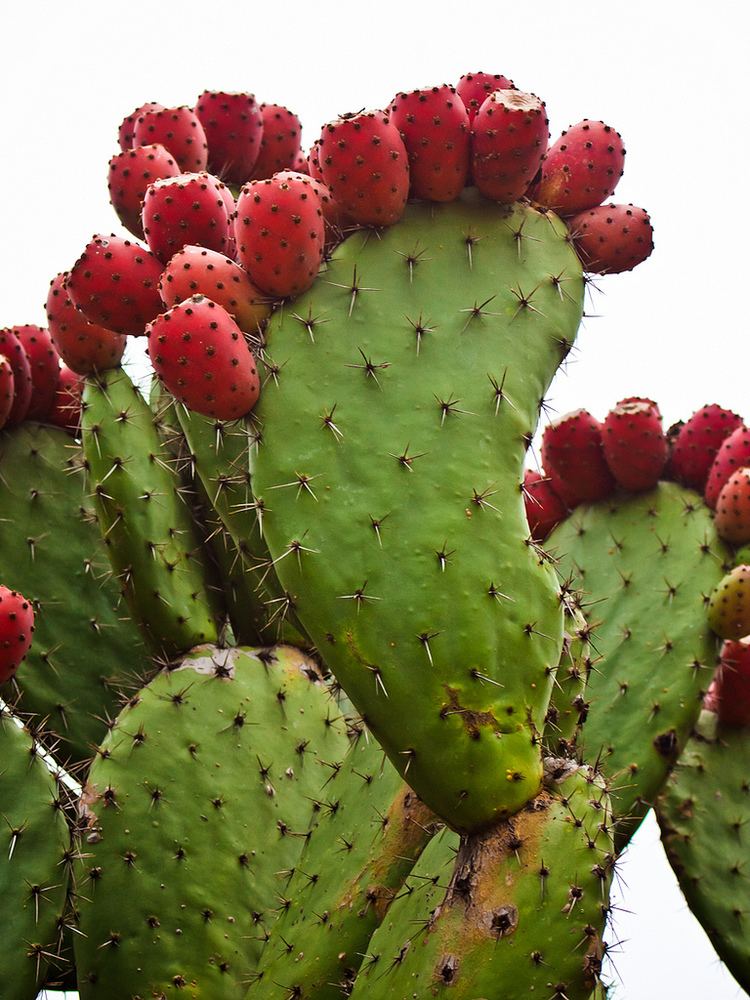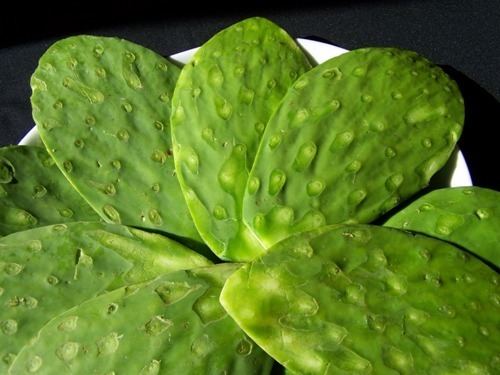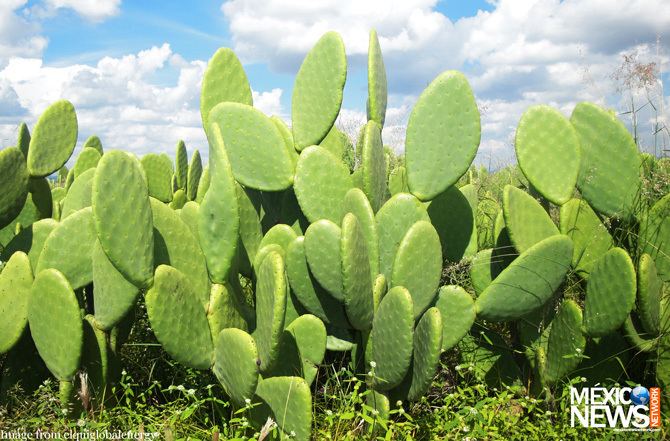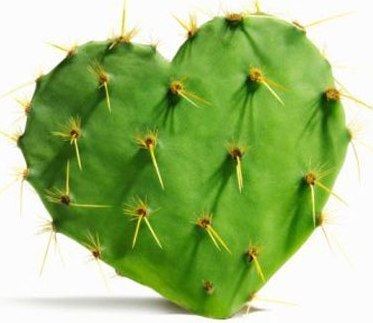 | ||
Similar Mole sauce, Water, Corn tortilla, Elote, Rajas con crema | ||
Para que sirve el jugo de nopal propiedades beneficios y contraindicaciones del nopal
Nopal (from the Nahuatl word nohpalli [noʔˈpalːi] for the pads of the plant) is a common name in Mexican Spanish for Opuntia cacti (commonly referred to in English as prickly pear), as well as for its pads.
Contents
- Para que sirve el jugo de nopal propiedades beneficios y contraindicaciones del nopal
- Beneficios de el nopal
- Nutrient content
- Research
- Economic value
- References

There are approximately one hundred and fourteen known species endemic to Mexico, where the plant is a common ingredient in numerous Mexican cuisine dishes. The nopal pads can be eaten raw or cooked, used in marmalades, soups stews and salads, as well as being used for traditional medicine or as fodder for animals. Farmed nopales are most often of the species Opuntia ficus-indica or Opuntia joconostle although the pads of almost all Opuntia species are edible. The other part of the nopal cactus that is edible is the fruit called the tuna in Spanish, and the "prickly pear" in English.

Nopales are generally sold fresh in Mexico, cleaned of spines, and sliced to the customer's desire on the spot, they can also be found canned or bottled, and less often dried, especially for export. Cut into slices or diced into cubes, nopales have a light, slightly tart flavor, like green beans, and a crisp, mucilaginous texture. In most recipes, the mucilaginous liquid they contain is sometimes included in the cooking. They are at their most tender and juicy in the spring.

Nopales are most commonly used in Mexican cuisine in dishes such as huevos con nopales "eggs with nopal", carne con nopales "meat with nopal", tacos de nopales, in salads with tomato, onion, and queso panela (panela cheese), or simply on their own as a side vegetable. Nopales have also grown to be an important ingredient in New Mexican cuisine and in Tejano culture of Texas.

Beneficios de el nopal
Nutrient content

Per US cup serving, nopal fruit is an excellent source of the dietary mineral manganese (20% of the Daily Value, DV) and a good source of vitamin C (13% DV), magnesium (11% DV) and calcium (14% DV), with nutrient content improving as the plant matures. Its calcium may not be biologically available because it is present as calcium oxalate, a non-absorbable complex in the small intestine.
Research
Dietary nopales is under preliminary research for how it may affect the glycemic index.
Economic value

The nopal cactus grows extensively throughout Mexico, being especially abundant in the central Mexican arid and semi arid regions. In Mexico there are over three million hectares (ha) of land used to cultivate nopal. There are three typical ways to cultivate nopal cacti — commercial plantations, family farms and gardens, or in the wild. The main use for cultivated nopal is for feed for livestock with one hundred and fifty thousand hectares designated to that purpose. After that, approximately 57,000 ha are used to produce prickly pear fruit, 10,500 ha for the pads production, and 100 ha to cochineal production. In 1996 there were 20,300 prickly pear farmers, as well as around 8000 general nopal farmers, with all of the people involved in the processing industries and in cochineal production, employing a significant number of the Mexican population. Nopal is grown in eighteen of the Mexican states with 74% in the Distrito Federal, with an annual yield of 58,000 tons of both the tuna and the pads. The farming of nopal provides many subsistence communities with employment, food, income, and allows them to remain on their land.
Detection of the cactus-eating moth Cactoblastis cactorum in Mexico in 2006 caused anxiety among the country's phytosanitary authorities, as this insect can be potentially devastating for the cactus industry. On the other hand, the same insect was successfully used in Australia in 1925 to control the cactus population, as it became an Invasive species after its introduction.
